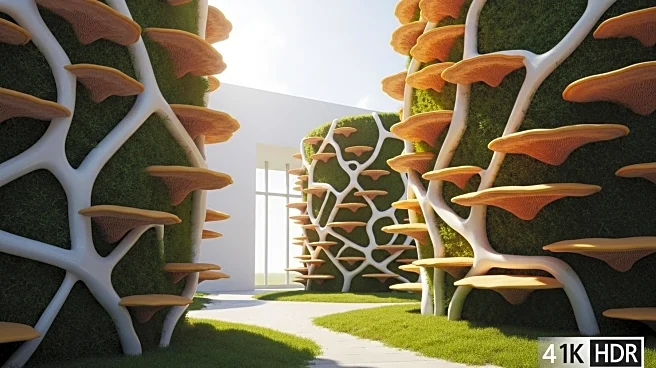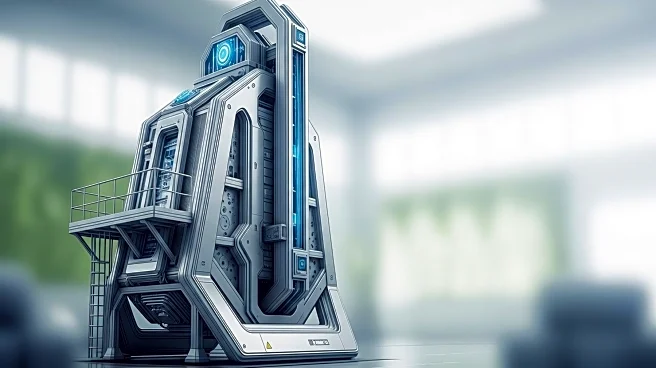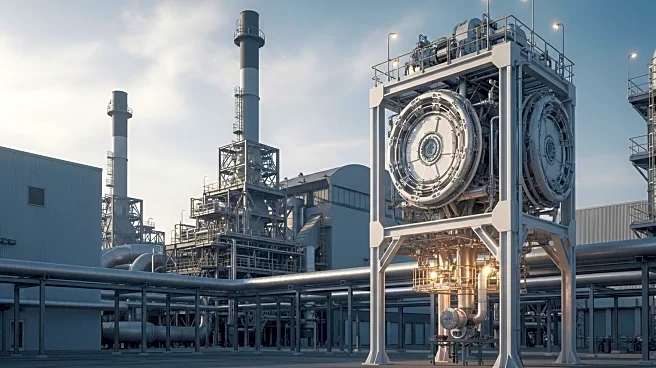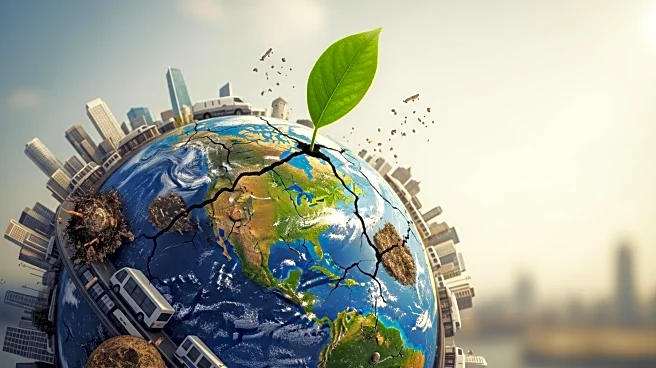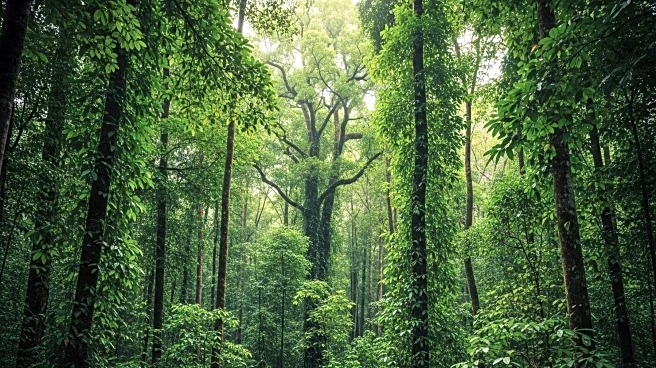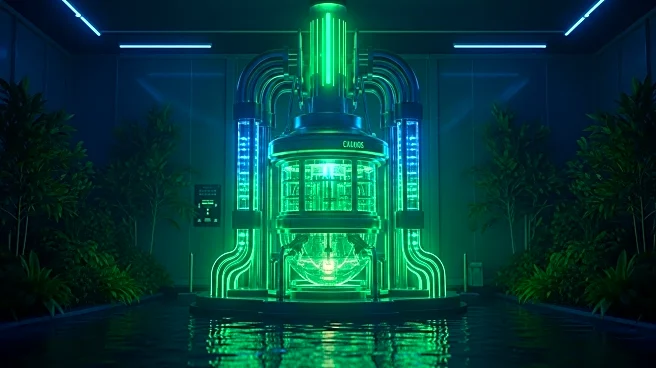What is the story about?
What's Happening?
A European research initiative, Fungateria, is pioneering the development of engineered living materials (ELMs) by combining fungal mycelia with bacteria. These materials are designed to be sustainable, self-healing, and adaptable, offering a greener alternative to traditional construction materials like concrete and plastic. The project aims to create building materials that can grow, repair themselves, and respond to environmental changes. This approach could significantly reduce carbon emissions and waste in the construction industry, which currently contributes a substantial portion of the EU's total emissions.
Why It's Important?
The development of ELMs represents a transformative shift in construction practices, aligning with global efforts to reduce environmental impact and promote sustainability. By utilizing agricultural waste and reducing reliance on carbon-intensive materials, these innovations could lead to significant reductions in greenhouse gas emissions. The potential to create buildings that are not only sustainable but also self-maintaining could revolutionize architecture, offering long-term economic and environmental benefits. This research underscores the importance of integrating biological processes into industrial applications to address climate change challenges.
Beyond the Headlines
The concept of living buildings challenges traditional architectural norms, requiring a cultural shift in how society perceives construction materials. The integration of living organisms into buildings may initially face skepticism, but it also opens new avenues for public engagement and education about sustainable practices. As the research progresses, it could lead to broader acceptance and implementation of biohybrid architecture, fostering a deeper connection between human-made structures and natural ecosystems.
AI Generated Content
Do you find this article useful?
